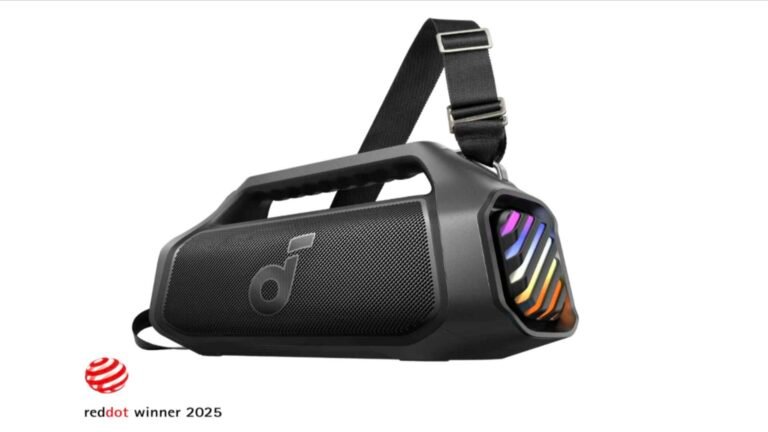The Ultimate Guide to Choosing the Best Portable Charger and Power Bank
Introduction
As our reliance on smartphones, tablets, and digital devices continues to grow, having a reliable backup power source has become a necessity rather than a luxury. This is where a portable charger, also commonly known as a power bank, comes into the picture. Whether you’re traveling, studying, working remotely, or spending time outdoors, a portable charger ensures your devices remain powered throughout the day. In a world where staying connected is crucial for communication, navigation, social media, and entertainment, the importance of owning a dependable power bank cannot be overstated. This guide explores everything you need to know about portable chargers—from how they work to what features to consider before buying one.
What Is a Portable Charger?
A portable charger is a compact, rechargeable battery designed to store electrical power and deliver it to your devices when needed. Unlike traditional chargers that require a wall outlet, a portable charger gives you freedom and mobility. It acts as a power source that you can carry in your bag, pocket, or luggage. With the increasing use of smartphones, wireless earbuds, smartwatches, e-book readers, and portable speakers, power banks have become essential accessories for daily life. Depending on the capacity and features, a power bank can charge a smartphone multiple times or even power larger devices like tablets and laptops.
How a Power Bank Works
A power bank stores energy in rechargeable lithium-ion or lithium-polymer cells. To use it, you first charge the power bank itself through a wall adapter, computer USB port, or, in some models, through solar power. Once the portable charger is fully charged, it holds the stored energy until you connect a device using a USB cable or wireless charging surface. Modern power banks come with intelligent technology that regulates voltage, controls temperature, and prevents overcharging. These safety circuits ensure your devices receive the right amount of power and stay protected against damage. The combination of portability, efficiency, and safety makes power banks an ideal solution for everyday charging needs.
Why You Need a Portable Charger
There are countless reasons why owning a portable charger is beneficial. The most obvious one is the ability to stay connected wherever you go. Whether you’re traveling for long hours, attending a busy event, or stuck in a place without access to a charger, a power bank keeps your devices running. It becomes especially important during emergencies, such as power outages, long drives, or outdoor adventures like hiking and camping.
A portable charger also helps when you use your smartphone intensely—for video recording, gaming, social media, or navigation apps—which drain the battery quickly. For people who carry multiple devices, having a power bank allows you to charge them all without searching for wall sockets. In today’s fast-moving world, a portable charger gives you peace of mind by ensuring your device never dies when you need it most.
Key Features to Consider When Buying a Portable Charger
Choosing the right portable charger depends on your usage, device type, and daily routine. One of the most important features to consider is battery capacity, which is measured in milliamp-hours (mAh). Smaller power banks with 5,000–10,000 mAh are ideal for quick, lightweight charging but typically only offer one full phone charge. Medium-sized power banks ranging from 10,000–20,000 mAh are suitable for daily use and can charge most smartphones 2–4 times. High-capacity power banks above 20,000 mAh are perfect for travel, camping, and people who need multiple charges or want to power larger devices.
Another essential factor is charging speed. Technologies like Quick Charge (QC) and Power Delivery (PD) allow significantly faster charging than standard power banks. PD power banks can charge a smartphone from 0% to 50% in as little as 20–30 minutes. If you regularly charge tablets, gaming consoles, or laptops, choosing a power bank with high-wattage PD output is a smart decision.
Port selection is also important. The best portable chargers come with multiple USB-A and USB-C ports, allowing you to charge several devices simultaneously. Some modern power banks also include wireless charging pads, built-in cables, or even AC outlets for more demanding devices. These features increase convenience and make the portable charger more versatile.
Design, Portability, and Build Quality
The portability of a power bank depends on your lifestyle. If you prefer something easy to carry in your pocket, a slim, lightweight power bank is the best choice. If you travel or camp frequently, a larger model with more capacity may be worth the added weight. Build quality matters too—look for power banks with durable casing, strong materials, and solid construction to ensure long-term use.
Safety features are another critical aspect. A reliable portable charger must include overcharge protection, temperature control, short-circuit protection, and surge protection. These built-in safety systems ensure that both your power bank and your devices stay safe during charging. Cheaper, low-quality power banks often lack these protections and can damage your devices over time.
Different Types of Power Banks
There are several types of portable chargers available today. Standard power banks are affordable and ideal for daily smartphone charging. Fast-charging power banks use QC or PD technology to provide rapid charging for modern devices. Solar power banks are designed for outdoor lovers and are great for situations where electricity is not available, as they recharge using sunlight. For professionals and travelers, high-capacity laptop power banks offer enough power to charge laptops, drones, cameras, and other high-energy devices.
Best Practices for Using a Portable Charger
To maximize the lifespan of your power bank, follow some simple best practices. Avoid exposing it to extreme heat or cold, which can damage the battery. Charge your portable charger regularly, even if you are not using it every day. Use high-quality cables to maintain charging efficiency, and avoid draining the power bank to 0% too often. If your power bank has multiple ports, avoid connecting too many high-demand devices simultaneously, as it can slow down charging speeds and overheat the battery.
Conclusion
A portable charger or power bank is one of the most useful accessories to own in today’s digital lifestyle. It keeps your devices powered, helps you stay connected, and provides a reliable backup during emergencies or busy days. With the right features—such as high capacity, fast charging, solid build quality, and safety protections—a good power bank can make your life much easier. Whether you use your phone for work, travel, content creation, or entertainment, investing in a high-quality portable charger ensures you never run out of battery again. By understanding what to look for and choosing a power bank that fits your needs, you can enjoy uninterrupted power anytime and anywhere.







